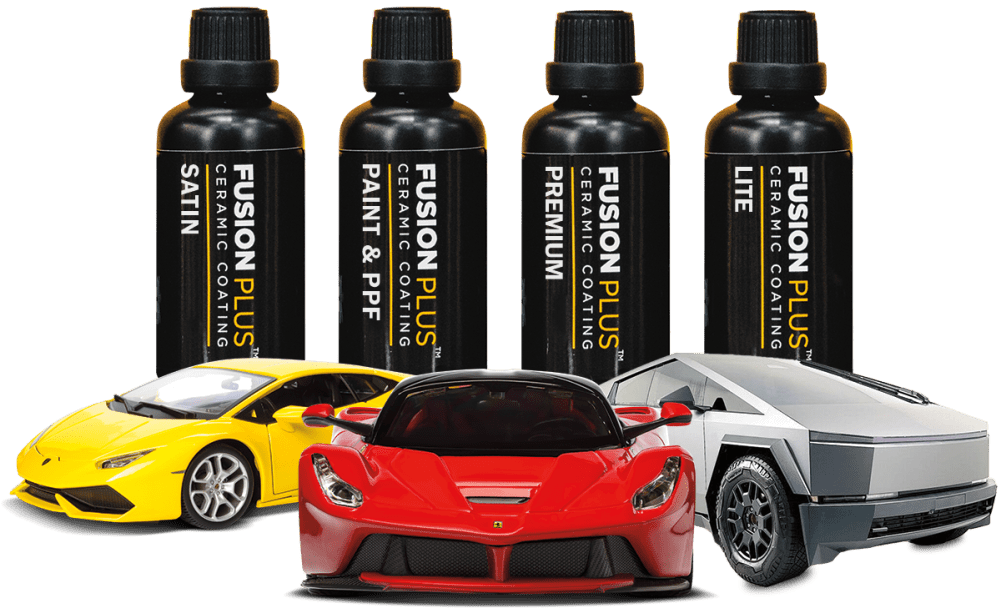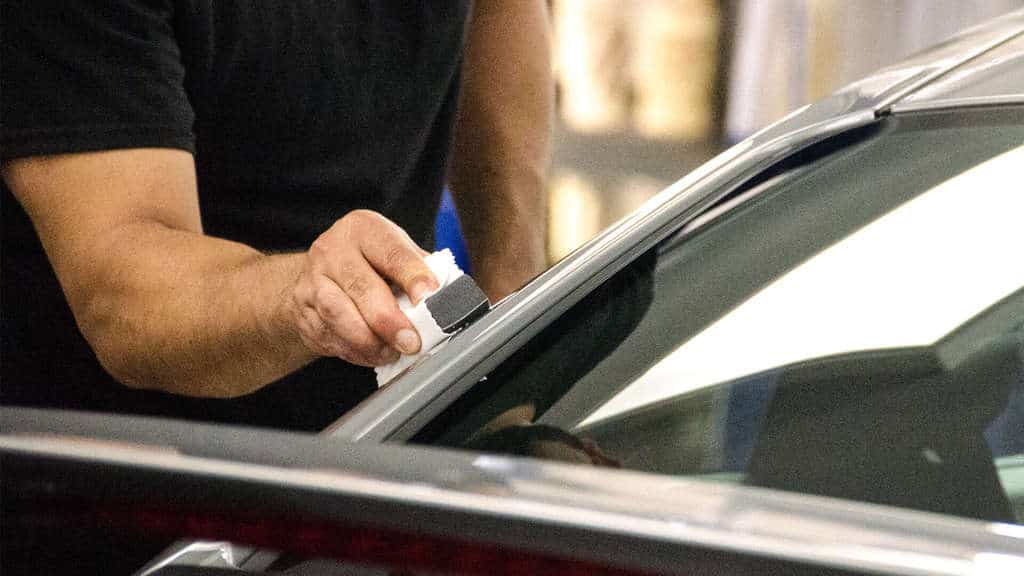Top Benefits of Ceramic Coating for Long-Lasting Car Care
Top Benefits of Ceramic Coating for Long-Lasting Car Care
Blog Article
Ceramic Coating vs. Typical Wax: Which Offers Better Long-Term Security?
The debate between ceramic layers and traditional wax for vehicle protection has amassed significant focus amongst auto fanatics and specialists alike. While both offer the objective of protecting paint, their differences in toughness, application, and lasting upkeep expenses may influence a customer's option. Ceramic layers flaunt premium long life and resistance to ecological aspects, yet the intricacy of their application questions regarding availability and usefulness. As we check out these contrasting alternatives, it ends up being important to think about not just the immediate advantages but also the implications for car treatment over time.
Review of Ceramic Finishing
Ceramic finish has gained considerable appeal amongst automobile fanatics and detailers alike as a result of its sophisticated protective top qualities. This cutting-edge technology is made to create a sturdy, hydrophobic guard over a car's paint surface, considerably boosting its resistance to environmental pollutants such as dust, UV rays, and chemical stains. Unlike typical wax, which supplies a momentary layer of defense, ceramic coverings bond at a molecular degree with the paint, providing lasting longevity-- often prolonging past 2 years with appropriate upkeep.
The application process involves meticulous preparation of the vehicle's surface, consisting of cleaning and polishing to make certain optimal adhesion. Once used, the layer treatments to develop a robust layer that not only adds depth and gloss to the paint but additionally streamlines maintenance. With its hydrophobic residential properties, ceramic layer enables water and dirt to move off even more conveniently, reducing the frequency of laundries and lessening the danger of swirl marks.
Moreover, ceramic finishings are offered in numerous solutions, allowing users to choose items tailored to their particular needs and preferences. In general, ceramic finishing represents a considerable improvement in paint security innovation, providing remarkable efficiency contrasted to standard alternatives.
Summary of Traditional Wax
Commonly considered a staple in automotive care, wax acts as a preferred option for those looking for a simple approach to boost and secure their automobile's paint - ceramic coating. Automotive wax typically consists of all-natural active ingredients, such as carnauba, or artificial compounds, created to develop a safety layer on the surface of the paint. This layer not only improves the automobile's gloss and beam but likewise gives an obstacle against environmental impurities
The application of wax is generally easy to use, making it accessible for both specialists and DIY lovers. It can be applied by hand or machine, enabling flexibility in the outlining procedure. When applied, wax needs a healing duration, after which it solidifies to form a safety shell. Wax is likewise known for its capability to ward off water, advertising a beading result that aids in the avoidance of water spots and rust.
However, while wax works for enhancing the visual charm of a car, it is essential to note that the defense it provides may necessitate much more regular reapplication compared to alternative items, such as ceramic coatings. Generally, traditional wax stays a favored alternative for those focusing on ease of usage and instant visual enhancement.
Durability and Longevity Contrast
While both ceramic layers and standard wax deal safety benefits for automobile paint, their toughness and long life vary dramatically. Traditional wax, usually made from all-natural carnauba or artificial polymers, usually provides a safety layer that lasts approximately three to 6 months. This reasonably short life expectancy demands regular reapplication to keep optimal protection.
On the other hand, ceramic coverings are crafted from innovative nanotechnology, creating a covalent bond with the paint surface. This causes a robust, hydrophobic layer that can endure for two to five years, depending upon the item and environmental conditions. The remarkable toughness of ceramic coverings is credited to their chemical structure, which provides enhanced resistance to scrapes, UV rays, and oxidation.

Protection Versus Environmental Variables
Securing a car's paint from environmental variables is important for keeping its appearance and worth with time. Cars are regularly revealed to a selection of components, consisting of UV rays, bird droppings, tree sap, acid rainfall, and road grime, all of which can jeopardize the honesty of the paintwork.
Ceramic finishes provide a robust defense versus these ecological aggressors. Unlike conventional wax, which can weaken rapidly under UV direct exposure, ceramic finishings form a sturdy, hydrophobic layer that withstands the dangerous effects of sunshine and toxic wastes. This advanced innovation develops a chemical bond with the lorry's surface, using superior protection that lasts for several years, even in severe conditions.
Typical wax, while easier to apply, typically calls for frequent reapplication and offers limited resistance to contaminants and UV rays. In time, it can damage down, leaving the paint at risk to scratches and oxidation. On the other hand, ceramic finishes preserve their safety qualities longer, significantly decreasing the risk of paint damage and guaranteeing that the car maintains its visual allure. As a result, ceramic coatings are increasingly identified as the premium selection for long-lasting security against ecological aspects.
Application and Upkeep Distinctions
The approaches of application and subsequent maintenance for ceramic finishings and typical wax differ significantly, affecting the overall user experience and performance of each item. Ceramic coverings need a more elaborate application procedure, normally including surface prep work that consists of washing, sanitizing, and brightening the vehicle. When the surface area is ready, the ceramic browse around these guys layer is applied in a regulated atmosphere, typically needing professional knowledge to ensure appropriate healing and bonding to the paint.

While both products improve car appearance, the longer-lasting security supplied by ceramic layers may warrant their first financial investment, despite the more demanding application process. Conversely, conventional wax remains a prominent option for those looking for an easier, albeit temporary, service.

Verdict
To conclude, ceramic finishings demonstrate considerable advantages over standard wax in terms of toughness and ecological defense. With a lifespan extending two to five years and exceptional resistance to UV rays, dust, and chemical discolorations, ceramic finishings use an extra efficient option for lasting vehicle maintenance. The application process may require specialist experience, the resulting expense savings and lowered frequency of reapplication underscore the worth of ceramic finishes for those seeking optimum automobile protection.
The discussion in between ceramic coverings and typical wax for automobile protection has actually gathered significant focus among automobile fanatics and experts alike. Unlike traditional wax, which supplies a short-term layer of defense, ceramic coverings bond at a molecular degree with the paint, using long-lasting longevity-- commonly extending beyond 2 years with proper upkeep.
While both ceramic coatings and standard wax deal protective advantages for automotive paint, their durability and long life differ significantly. For auto enthusiasts seeking long-lasting defense, ceramic coverings provide an engaging benefit over conventional wax items.
In verdict, ceramic finishings show significant advantages over typical wax in terms of resilience and ecological protection.
Report this page